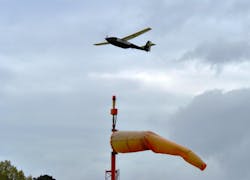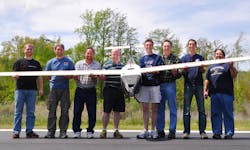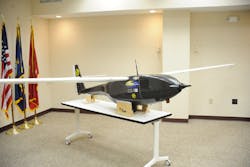Naval Research Lab Ion Tiger powered by fuel cells breaks endurance record for small, electric UAVs
WASHINGTON, 15 May 2013. Researchers at the U.S. Naval Research Laboratory flew their fuel-cell-powered Ion Tiger unmanned aerial vehicle (UAV) for 48 hours and 1 minute, 16-18 April, by using liquid hydrogen (LH2) fuel in a new, NRL-developed, cryogenic fuel storage tank and delivery system.
Last month’s flight shatters the previous record of 26 hours and 2 minutes set in 2009 using the same vehicle, but with gaseous hydrogen stored at 5,000 pounds per square inch (psi).
“Liquid hydrogen coupled with fuel-cell technology has the potential to expand the utility of small unmanned systems by greatly increasing endurance while still affording all the benefits of electric propulsion,” says Dr. Karen Swider-Lyons, NRL principal investigator.
Liquid hydrogen is three times denser than compressed hydrogen. The cryogenic liquid is stored in a lightweight tank, allowing more hydrogen to be carried onboard to increase flight endurance. Success in flight requires developing a high-quality, lightweight, insulated flight Dewar for the cryogenic fuel, plus matching the boil off of the cryogenic hydrogen to the vehicle fuel consumption.
Long endurance is possible with conventional, hydrocarbon-fueled systems, yet they are usually loud, inefficient, and unreliable in this aircraft class. Similarly, small, electric, battery-powered systems are limited to endurances of several hours.
To address the logistics of in-theater supply of liquid or gaseous hydrogen, NRL proposes in-situ manufacture of LH2 for use as fuel. An electrolyzer-based system would require only water for feedstock and electricity, possibly from solar or wind, to electrolyze, compress, and refrigerate the fuel.
The NRL LH2 flight capability is being developed by NRL’s Tactical Electronic Warfare and Chemistry Divisions, and is sponsored by the Office of Naval Research.


